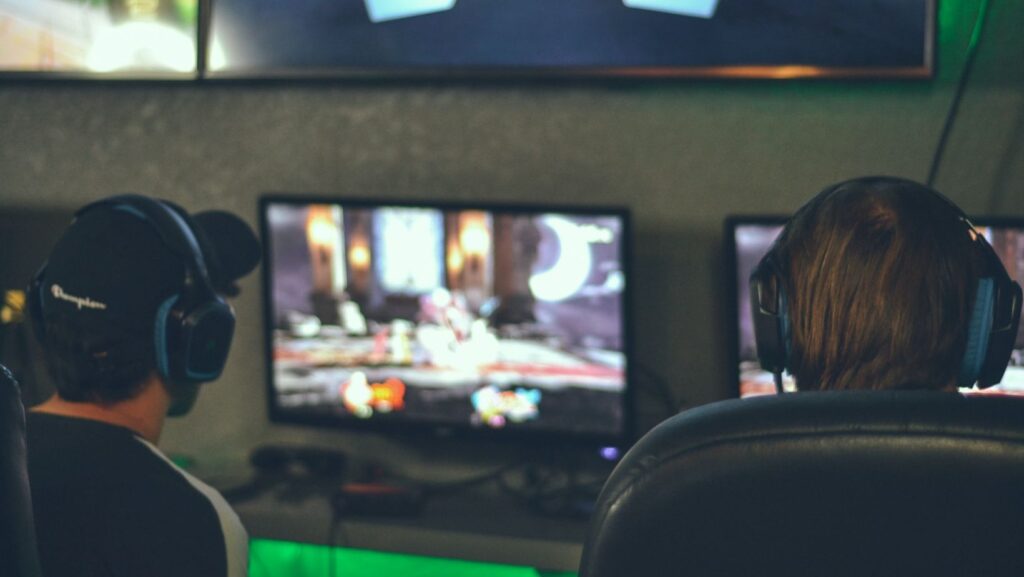
An integral part of the esports industry is esports broadcasts, where fans, regular viewers, and just ordinary people who are interested in watching something unusual can watch colorful and interesting battles in their favorite disciplines. But to make an exciting and visually appealing stream is not so easy.
To achieve this goal, it is not enough to simply launch your broadcast on one of the popular streaming services like Twitch or YouTube. This often requires a whole range of factors to be taken into account, from knowledge about the game to a team of professionals who can help you create a high-quality media product. Additional fun can be added to your experience by csgo gambling sites, which can help to diversify your experience of watching esports broadcasts. In general, it is not surprising that the number of studios making high-quality esports broadcasts can be counted on the fingers of two hands.
In this article, you can learn about the role of E-Sports Broadcasters, the importance, and complexity of analyzing gameplay, the subtleties of live audience interaction and the future of E-Sports Broadcasting.
The Role of E-Sports Broadcasters
Cybersports broadcasting is usually either done by professional studios, also called broadcasters, or by individual streamers who broadcast gameplay with their own commentary in their homes or personal studios.
Explaining Complex Gameplay Strategies to a Diverse Audience
An important skill for anyone trying to broadcast or work on camera during a major tournament is the ability to explain complex gameplay aspects and gameplay strategies in an understandable way to a very diverse audience. All the nuances of the gameplay can be understood when watching live broadcasts of eSports disciplines. After all, you can come to watch fierce battles in Dota 2 or Counter-Strike: Global Offensive, both experienced players who understand all the subtleties of the game and people who do not know anything about it at all.
Building Excitement and Engagement
In addition to being able to explain the sometimes complex nuances of tactics and strategy in a popular way, you need to work on building excitement and engagement. A competent presenter, analyst, or streamer will need a good sense of humor, perhaps a colorful image, and audience relations skills.
Creating a Dynamic and Immersive Viewing Experience
The picture on an Esports broadcast should always be dynamic, whether it is different camera angles, dynamic gameplay, or creative adverts.
It’s always important to work on the immersiveness of the viewer’s experience, which increases the chances that viewers will come back to your broadcast more than once.
Keeping the Audience Invested in the Virtual Battles
In addition, it is worth considering the fact that the more time and money the audience spends on virtual battles, the more likely they are to stay with you for a long time. It’s important to be able to ignite the audience’s interest in The International in order to gain a loyal fan base.
Analyzing Gameplay
In esports streaming and broadcasts of major tournaments, it has always been important to analyze gameplay. It can be either a breakdown of a past match or a betting tip on a match created on the basis of previous statistics and match history, but both of these aspects are united by a deep knowledge and understanding of a particular game. Knowledge of various insides and little-known facts about players and teams will only be an advantage.
It is also important to have an analytical mindset in order to do a live breakdown of all the tactics, strategies, and in-game decisions made by teams during competitive matches. This helps to bring an educational element to the broadcast, making it not only an enjoyable way to spend your free time but also a rewarding one.
Engaging with the Audience
Another vital element of esports broadcasts is engaging with the audience both live and at the end of the stream.
Interacting with Viewers in Real-time
Viewers love it when their favorite presenter or streamer pays attention to them and interacts with them. This greatly increases engagement and makes the experience of watching a broadcast more personalized.
To achieve this, you need to engage with your live audience in every way possible. You can communicate with live chat and come up with all sorts of quizzes, flash mobs, and reward systems for donations. For example, for a certain amount of donations, you can shave off your mustache or wear a funny t-shirt.
Responding to Comments, Questions, and Predictions
But the audience engagement activities don’t end there. At the end of the broadcasts, you can respond to comments, questions, and betting tips from your own audience. In this way, you are working on your own image as a “live person” who enjoys interacting with your viewers and increasing the core of your viewer base.
The Future of E-Sports Broadcasting
Over the last 15-20 years, e-sports broadcasting has evolved significantly both technologically and qualitatively. More streaming platforms have emerged, most notably the iconic Twitch. The development of technology has improved picture quality, and the growth of budgets of lighting studios has made broadcasting more professional, adding more angles. Also, a significant step forward has been the use of AR technology. Augmented reality allows colorful infographics, gameplay elements, in-game characters, and other elements that are visualized using 3D graphics to be displayed on the viewers’ screen.

VR technologies and meta-universe elements are among the promising directions. VR will add more immersion to esports broadcasts and the possibility of feeling like a direct participant in the matches. The realization of the meta-universe concept will allow people to immerse themselves even deeper into the eSports industry, as well as to invest in it personally.
Conclusion
At first glance, it may seem that conducting esports broadcasts is a fairly simple endeavor. But in fact, it is a complex process, which requires both specific knowledge, the ability to work in the frame, as well as technical background and skills to implement a visually appealing stream on your favorite esports disciplines.
It is important to be able to analyze gameplay in real-time, as well as work with your own audience. Esports broadcasts are already the same quality as full-fledged TV shows, but they still have room to grow, for example, to integrate elements of VR or the metaverse. Such broadcasts fulfill both an entertaining and educational role, allowing everyone to touch the world of virtual battles.













